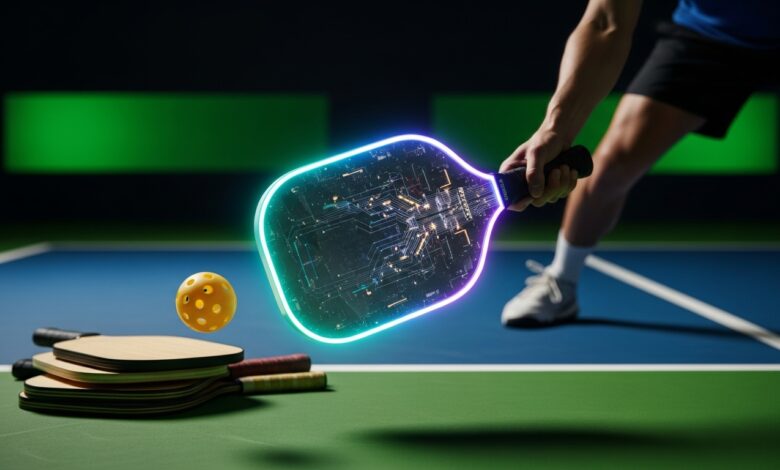Can Pickleball Remain Fair as Paddle Technology Continues to Evolve?

Pickleball, once viewed as a casual backyard pastime, has exploded into one of America’s fastest-growing competitive sports. Courts are popping up in every community, professional tournaments are drawing global attention, and players of all ages are joining the ranks. But with that growth comes a new challenge—technology.
As manufacturers race to design paddles that are lighter, stronger, and more powerful, a pressing question has emerged: Can pickleball remain fair as paddle technology continues to evolve?
At the heart of the debate lies an uneasy balance between innovation and integrity—a balance that will shape the future of the sport itself.
The Rise of the “Technology Paddle”
Early pickleball paddles were simple. Wood was the material of choice, and craftsmanship was basic. Today, however, paddles are engineered with the same level of sophistication as professional tennis rackets or golf clubs. Carbon fiber, polymer cores, textured surfaces, and vibration-dampening technologies are redefining what’s possible in terms of speed, spin, and control.
The result? A dramatic shift in the game’s dynamics. Players can now hit harder, return faster, and manipulate spin with surgical precision. For some, this progress represents a natural evolution—a sign that the sport is maturing. For others, it threatens the very simplicity and accessibility that made pickleball appealing in the first place.
The Ethics of Innovation
Every sport wrestles with the question of where to draw the line on equipment innovation. In tennis, debates over racket size and string tension led to regulatory reforms. In golf, the U.S. Golf Association had to set limits on club design to preserve skill balance.
Pickleball now faces a similar crossroads. Should there be stricter limits on paddle construction to ensure fairness, or should players be free to take advantage of whatever technology can offer?
Critics argue that advanced paddles can create an uneven playing field—where equipment, not skill, determines performance. Supporters, however, claim that innovation fuels competition, pushes players to adapt, and ultimately raises the game’s standards.
The tension lies in deciding how much technology is too much.
Why Regulation Matters
The USA Pickleball Association (USAP), the governing body of the sport, has implemented standards to maintain competitive fairness. Paddles are tested for surface texture, deflection, and other measurable attributes to ensure consistency.
These tests serve an important purpose: they prevent paddles from providing artificial advantages, such as excessive spin or power that could distort gameplay. Without oversight, the sport could quickly devolve into an arms race of paddle technology, where those who can afford the most advanced gear dominate the court.
This is why USAP Approved High Performance Pickleball Paddles exist—to preserve integrity while allowing for innovation within reasonable limits.
Still, as technology accelerates, the question becomes whether these regulations can keep pace with the ingenuity of designers and manufacturers.
The Skill vs. Equipment Debate
At the heart of the discussion is an age-old dilemma: does better equipment make a better player?
While technology can enhance performance, it can’t replace fundamentals. Footwork, anticipation, and strategic play remain the foundation of pickleball success. Even the most advanced paddle can’t compensate for poor technique or weak game awareness.
Yet, there’s no denying that elite-level paddles can provide a competitive edge. A player using a precision-engineered paddle with optimal surface texture and core density can generate more spin and control than someone using a basic model.
This reality introduces subtle inequality into recreational and competitive play. As the gap between budget paddles and pro-grade gear widens, so does the potential performance divide among players.
The Economics of Access
One of pickleball’s greatest appeals has always been its accessibility. Compared to golf or tennis, the entry costs are minimal—a simple paddle, a few balls, and access to a court. But as high-tech paddles enter the market, some retailing for hundreds of dollars, accessibility may be under quiet threat.
Casual players might begin to feel disadvantaged against competitors wielding top-tier paddles designed for maximum spin and power. This could shift pickleball’s identity from a community-driven sport to a more gear-dependent arena, subtly excluding newcomers or those on limited budgets.
If pickleball is to remain inclusive, the industry must ensure that innovation doesn’t outpace affordability.
Innovation as a Double-Edged Sword
There’s no denying that technological progress brings excitement to the sport. Players who once relied on wooden paddles now enjoy precision and responsiveness that make the game more dynamic and engaging. For professionals, these advancements allow for more complex strategies and athletic expression.
However, innovation must coexist with fairness. When performance becomes too closely tied to equipment, the spirit of competition erodes. Pickleball, like any sport, thrives when victory reflects skill, not spending power.
The key lies in responsible innovation—developing paddles that enhance gameplay without overpowering it.
Looking Ahead: The Future of Regulation and Design
As pickleball continues to expand, regulation will evolve alongside it. USAP and other governing bodies are already exploring new methods for testing paddles, focusing on measurable outcomes like ball deflection and spin rate.
Manufacturers, in turn, are collaborating more closely with regulators to ensure compliance while still pushing the boundaries of design. The result could be a healthy balance—where technology advances, but fairness remains intact.
In the long run, the sport’s success will depend not on how powerful paddles become, but on how well the community preserves the essence of pickleball: fun, inclusivity, and skillful play.
Keeping the Spirit of the Game Alive
Pickleball’s rapid rise brings both opportunity and responsibility. Technology has made the game more exciting and competitive, but unchecked innovation could compromise the principles that built its popularity.
The challenge moving forward is to embrace progress without losing perspective. Regulation, education, and ethical design will all play vital roles in ensuring that the sport remains both accessible and fair.
Because at its core, pickleball isn’t just about precision or power—it’s about connection, strategy, and joy. And no amount of technology should ever change that.




